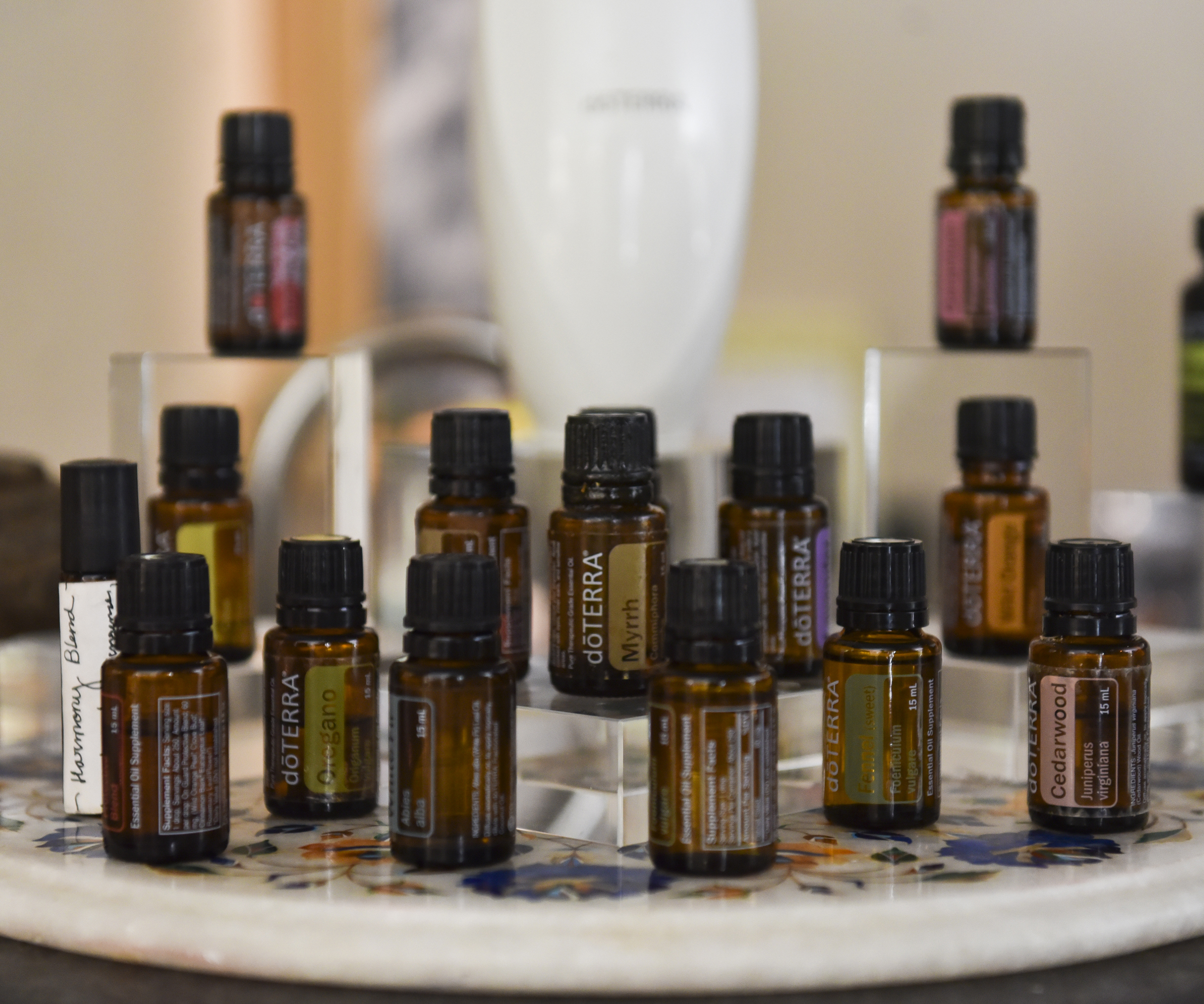When “Sarah” attended a training day that promised to help her sell lipstick, she was hoping to get some business lessons and a few tips on how to apply make-up. She had recently signed on to sell SeneGence cosmetics after the friend who had introduced her to the products told her she could get a discount if she became a distributor.
Sarah’s intention had only ever been to buy the colours she wanted and sell some on to people who were interested. She really liked the lipstick, after all, and you couldn’t buy it in stores. But as she sat listening to the company’s training, she had the sickening realisation that what she had signed up for was not really about make-up at all.
“The whole thing was about marketing. It was about pushing recruitment,” she tells The Weekly. “It was even things like: ‘Just contact your friends and say we’ve got a special deal in your suburb. It doesn’t have to be true. Make a list of all the people you know. These are all people you can approach. Everybody is your market.’ It’s really unpleasant.”

SeneGence cosmetics representatives present an image of financial independence and female empowerment – but how real is it?
Sarah had been recruited into a multi-level marketing company, or MLM. She’d paid for a business starter kit, thinking she would make a little money. Now it appeared the only way she could turn a meaningful profit was by signing up other people to sell lipstick.
SeneGence denies these allegations, saying distributors’ main income comes from product sales. However, research that has just been published by the Queensland University of Technology found low levels of profitability and financial literacy in MLMs. Have you received a pitch like this on social media?
“Hi Hun, how are you? I wanted to touch base because I’ve just attended the most incredible conference and it left me inspired to share more about my business with people I feel could benefit.”
MLM critics say sellers like these have become part of a system that exploits women’s need and desire to earn an income while caring for their family. Sarah says her experience left her feeling that they were “basically business cults”.
“They are predatory and growing during the pandemic. It’s a huge issue,” she says. Before she signed on with SeneGence she read the documents very carefully, but she found that what MLM companies say on paper is vastly different from the way they operate in the real word.
“I thought: all of those things seem reasonable to me. When you actually get in, it’s a different story.” She was immediately added to several closed Facebook groups and says, “When you first get in, it’s like, ‘this is your new sisterhood’ and it’s all the love bombing stuff.”
Screenshots she provides show a world of toxic positivity. If someone speaks out, they’re blocked or deleted. “If you’re slightly critical in asking questions, you get slapped down pretty quickly,” Sarah says. “There is a lot of emotional and psychological manipulation, bullying and abuse behind the scenes.”
WATCH: I Joined An MLM To Earn Extra Money — Here’s What Actually Happened. Story continues after video.
MLMs use direct selling to distribute products like make-up, health supplements and even sex toys. Distributors also earn income by recruiting other sellers. They train and motivate their new recruits who are known as their ‘downline’ and take a cut of their sales. In turn, a portion of their earnings go to the person who recruited and trained them, their ‘upline’. Uplines are highly incentivised to keep their downlines hustling and working harder.
“This is YOUR world my loves. You have ONE chance at this. ONE go at living this life here on earth. Why the hell wouldn’t you give it all that you got????” This is a post from an MLM’s closed group.
There’s money to be made, to be sure. The local sector is worth $1.4 billion annually, according to Direct Selling Australia, but research shows all the profits are concentrated at the very top of the company.
Sarah says: “These companies are basically ‘legal’ pyramid schemes operating within the grey areas of Australian consumer legislation.”
MLMs differentiate themselves from pyramid schemes by providing a product or service. But a major analysis of 350 MLMs found that 99 per cent of members simply could not make any money.

Who wouldn’t want to make a full-time salary while working part time, often from home?
“Profitability in MLM does not come cheaply or easily,” the 2011 Consumer Awareness Institute report said. “It’s very costly and time-consuming, and compensation plans require consistent effort over time to advance in any MLM scheme. “
Crucially, in many MLMs, uplines don’t earn commission from the products their downlines sell, but from “stock” their downlines must buy in order to sell.
“That’s why the anti-MLMers say the distributors are the customers,” Sarah says. And in her experience, the people at the top would do and say whatever they needed to keep them buying.
Slave to sales
Texas resident Alanda Carter has Master’s degrees in anthropology and instructional design, so she is not someone you would expect to be lured into an MLM, but like many people, she found herself enticed by the promise of financial freedom and flexibility after a difficult time in her life.
“I became a victim after I went through breast cancer,” she says. “I was very vulnerable and I was looking for something that would give me freedom. One of the things that spoke to me about multi-level marketing was the illusion of being able to work from anywhere.”
Alanda began radiotherapy treatment in 2015. It was a difficult time, made harder by the fact that her manager didn’t like her working from home while she was recovering. Eventually she was told she no longer had a job. At the same time, she made friends with a neighbour who would come over to drink wine and talk about how she was earning six figures. “And I thought, well if you can do it, I can do that. I didn’t really know what it was until I got out.”

Chalene Johnson coaches PiYo during a Beachbody event in 2016.
Alanda’s neighbour became her upline and coached her to sell online workout programs, supplements, recipes and a powder called Shakeology for the fitness MLM Beachbody. Alanda quickly found herself immersed in a regime of regular calls, meetings and conferences. The other members in her Facebook group were called her “success partners”.
“It was all to keep you wrapped up within the mindset and the belief system of ‘Beachbody is your saviour’. So much of it is like attending an evangelical sermon but you also felt like you were part of something greater than yourself,” she says.
Each distributor needed a certain number of ‘volume points’ each month to be considered active. “Most people stay active by getting a month’s supply each month of Shakeology,” Alanda says. Once you start recruiting people, you become a “coach”.
“I did reach the first rank. Most people don’t. But I couldn’t hold that rank and it was very frustrating,” Alanda says. “I was working my arse off. I’d never worked so hard in my life for so little because I was actually losing money. Not making money.”

Essential oils MLM dōTerra is one of the more polific brands.
She was thinking if she just kept working harder, she’d start seeing returns. “You come to believe that the only reason you’re not successful is you don’t have the right mindset. I remember someone saying, ‘don’t let anyone else outwork you’.”
Alanda’s original upline left, so she was assigned to a woman who she believed was making more than $US3 million a year. “But that’s before expenses,” Alanda says.
Luxury, wealth and freedom are key parts of the MLM promise. Internal documents shared with The Weekly show there are 10 tiers in the SeneGence “Distributor Goal Matrix”, starting at Maiden, climbing up to levels including Countess, Duchess, Crown Princess and Empress. Distributors climb the royal rungs by recruiting new maidens and purchasing products for which they receive ‘point value’ or PVs. Each promotion comes with an enticing incentive – ruby or emerald charms, sashes and holidays. Once you have a few dozen distributors in your downline, the company will pay the lease on your branded Audi.
This is the modus operandi for most MLMs. Alanda describes members in constant contact with their uplines who push them to strive, sell and, crucially, spend.

Hugh Jackman appeared at dōTerra’s event in 2018. There is no suggestion that he was aware of the harmful practices adopted by some MLMs.
Companies host lavish training conferences where distributors are wooed and wowed by top-tier sellers and celebrities. Kelly Clarkson and Katy Perry performed at conventions for the scandal-plagued clothing MLM LuLaRoe. Hugh Jackman appeared at essential oils MLM dōTerra’s event in 2018. There is no suggestion, however, that these celebrities were aware of the harmful practices adopted by some MLMs.
Sarah recalls the pervasive princess paradigm at a SeneGence conference: “They get up on stage and they’re all in ballgowns and tiaras. It’s just horrible,” she says.
The frenzied #Girlboss chant is constant. “The comfort zone can be emotionally deadly … push yourself to do what needs to be done. You can achieve anything you set your mind to with hard work and dedication.” This is a screenshot of the messaging rained down on distributors.
“I was on social media so much that I injured my neck. Your work is 24/7, 365,” Alanda says. “You lose your mind. You’re no longer thinking critically. You become willing to start emulating those who are successful because you feel like that’s what you need to do. You do things you wouldn’t do if you were not crazed with MLM.
WATCH: LuLaRich – Official Trailer | Prime Video. Story continues after video.
“There are people who are having a baby and they’re doing a post about Beachbody or dōTerra. My upline – the woman who was making all that money – while she was in hospital with the last child she had, she kept doing stuff on Instagram. I was like, ‘Girl, just have your baby’.”
Alanda’s friends wanted nothing to do with her enterprise. “I’m sure they wanted to slap me,” she says. Her husband was supportive. “But he also didn’t know that I put a course that was $US5000 on a credit card.”
When she reflects on why she did this, she says: “I believed. It’s as simple as that. Their colour is blue. I was so smitten I said that I would bleed blue.” However, discontent was building, and the internet started feeding her content that reflected this.
“All of a sudden, anti-MLM content started coming into my bubble,” Alanda says. “I went, Oh my God, I was a Hun-bot?” The scales fell from her eyes. Alanda had lost $20,000 to Beachbody. But what was worse was that she’d recruited others to do the same. She was horrified.

A woman photographs a doTERRA essential oil booth at Mercedes-Benz Manhattan in 2021.
“My mother-in-law’s on a fixed income. I got her to join Beachbody because I was so desperate. It’s so embarrassing and shameful for me to admit that.” She now works to educate others on the perils of MLMs as The Recovering Hunbot on YouTube.
“They are a pyramid scheme. The main thing they are doing is endless chain recruitment. Unless you’re recruiting you cannot make money. It’s impossible to do it just on the products alone. I don’t want others to be taken advantage of the way I had been,” she says.
You’re the product
Sarah echoes Alanda’s sentiment that in many MLMs the products are a decoy for the real business of many of these operations, which is to lure participants in with unrealistic goals and channel their money to the top.
“The product is incidental, and they use it as a way of getting past legislation,” she says. The opaque nature of the MLM world makes it difficult to police. The compensation plans are often incredibly complex and sales take place in private houses and closed Facebook groups. The companies exercise a lot of control over their distributors.
“When you sign a contract, you say, if I leave, I will not speak out in public,” says Sarah. Most critics who are ex-members are anonymous because they’re scared of being sued. This is why Sarah is not using her real name.

Many of the women who sign up to MLMs are hoping to find financial independence. Instead, they end up losing
moneyUS lawyer Douglas M. Brooks has spent much of his career suing MLM companies on behalf of distributors who lost money, and began to see a pattern. “One universal fact was the vast majority of MLM distributors lose money, and eventually drop out, while a tiny percentage are paid huge sums,” he wrote.
He initially thought the reason so many people were signing up was that the MLM compensation structures weren’t clear, but he came to see that even when they were transparent, “these disclosures did not appear to have had much effect on the ability of MLM firms to recruit new participants”. After analysing MLM training videos and speaking to MLM distributors he reached a chilling conclusion:
“I suggest – and I am not the first – that the widespread use of coercive persuasion techniques similar to those employed by cults is at least partially to blame,” he wrote in Coercive Techniques in Business Opportunity Cults.
This goes some way to explaining how distributors have trouble seeing they have bought a losing ticket. Ponzinomics author Robert FitzPatrick says the fatal flaw in the multi-level marketing model is that growth is limited. A recruitment system that has one person recruiting five, who each recruit five, can only reach 13 levels before it exceeds the population of the Earth.
WATCH: How to spot a pyramid scheme. Story continues after video.
Beauty and the beast
There are an estimated 1000 active MLMs today. Australia has nearly half a million direct sellers, of which 77 per cent are women. Despite a growing anti-MLM movement online, Direct Selling Australia says the model “offers important benefits to people who want an opportunity to earn income and build a business of their own”.
Others say multi-level marketing, like any industry, is a broad church. Shelley worked as a salaried staff member for a well-known make-up MLM in 2017 and 2018. She was never a distributor herself and disagrees with the ‘hey hun!’ cold approach but sees MLM companies as providing opportunities to people who have a knack for sales to carve out a flexible source of income.
“I do believe there are some organisations with good intentions and others not so much,” Shelley says. When she worked for the MLM there were about 1000 “presenters” actively trying to build their business in Australia and New Zealand, and they could work “at home, around your kids, at night – whatever works for you,” Shelley says.
MLMs are divisive, Shelley says, but like anything, it’s important to have realistic expectations before signing on. “It is a sales job, so if you’re not the kind of person who would consider a sales role in a corporate environment or retail, you might want to reconsider because the success of it is to be able to make money, to recruit people, to believe in what you do so you can help build your business.”
She says the tiered system incentivises and rewards hard work.
“The top one per cent or whatever of [the MLM] is a minute number of women who are super successful and have been in the game since almost day one and all of a sudden their teams are just thousands and thousands of women. They rose by attrition,” Shelley says.
“You do need to go in with your eyes wide open and say, ‘Okay, I’m not going to leave my day job in the next month or two. But hey, maybe I could compromise on the salary side of things to be able to have the life and the lifestyle I want in a year or two. It’s part of this movement of people saying, I want a lifestyle, and I want to do something other than the 9 to 5.” But, she cautions, “if it feels too good to be true, it probably is.”

“If it feels too good to be true, it probably is.”
Assessing individual MLMs is difficult because the sector is not well regulated. But other entities are responding to the growing call for the space to be cleaned up. In 2020, TikTok banned MLM material from its platform “to reduce the spread of misleading content, including content that aims to deceive people for financial gain”. This reflects the Consumer Awareness Institute’s findings that MLMs are “extremely viral, predatory and harmful to many participants.”
For Sarah, the most important thing is shielding vulnerable groups from the MLMs’ false promise. And women, she believes, are particularly susceptible to believing the too-good-to-be-true MLM dream.
“It just ties into women’s lack of financial equality in the world,” she says. “It ties into [women] wanting to be mums at home with their kids and feeling torn. It’s leaning on mother guilt.”










